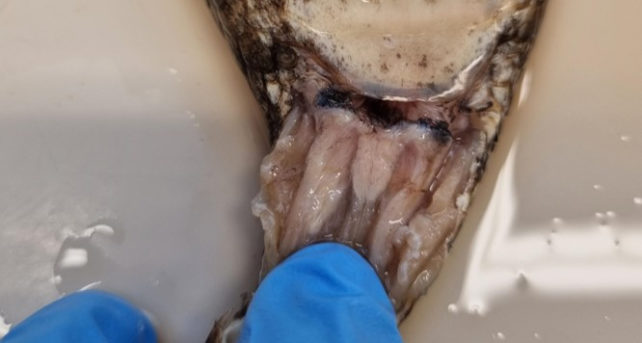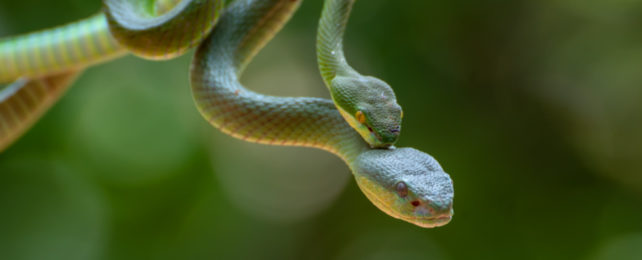It's been a big year for the clitoris.
In January, scientists discovered bottlenose dolphins have a large S-shaped clitoris that might be better placed for pleasure than our own species' version.
And just last month, researchers realized they had once again underestimated the female sex organ, when a study showed more than ten thousand nerve endings innervate the human female erogenous organ.
Now, for the first time, scientists have uncovered the equivalent sex organ in female snakes, striking down a host of misconceptions in the process.
Reproductive biologist Megan Folwell of the University of Adelaide in Australia and colleagues peeled back the layers of female snake genitalia across nine different species, using micro-CT imaging and dissection techniques.
They found that like their male counterparts who have two penises (called hemipenes), female snakes have two hemiclitores that form a triangular structure that varies in size and shape.
"It was such a prominent structure that was completely different to the hemipenes and clearly different to the scent glands and surrounding tissue," Folwell tells ScienceAlert. "The variation across species and the presence of nerve fibers was amazing!"
Given scientists' fascination with the delightfully creative sex organs of reptiles, you could wonder how snake hemiclitores have been missed.
To be fair, female snake reproductive parts don't pop out the way hemipenes do. Unlike the hemiclitores of lizards, which are eversible (meaning they can be flipped out of the body and tucked back in) the hemiclitores of snakes lack retractor muscles.
Nor are they adorned with spines or hooks as male parts are. The hemiclitores were small and thin in some snake species that Folwell studied. But others were "large and conspicuous, occupying most of the anterior tail region", presumably easy to spot if one cared to look.
Folwell soon spotted some other key differences that set snake hemiclitores apart. Looking at tissue sections of one species, the Australian death adder (Acanthophis antarcticus), under the microscope, Folwell and colleagues found that hemiclitores consisted of erectile tissue packed with blood cells, and bundles of nerves, but without the spines of male hemipenes.
"These histological features suggest the snake hemiclitores have functional significance in mating and definitively show that the hemiclitores are not underdeveloped hemipenes or scent glands," as other studies have suggested, Folwell and colleagues write in their published paper.
"The presence of erectile bodies with blood cells suggests that the hemiclitores engorge with blood, while the presence of abundant nerve bundles suggests that their stimulation may provide sensory feedback to the females."

This is an important find because it suggests snakes might use sensory stimulation to entice a mate, rather than males coercing females into sex as scientists thought was the case. But Folwell notes that hemiclitores could also play a role in stimulating ovulation or sending signals to store sperm in the oviduct, as reptiles do – sometimes for years at a time.
There's a lot we still don't know, because the newly described snake hemiclitores is yet another example of the scientific neglect of the female clitoris. "This neglect has delayed our understanding of reproductive biology and behavior of females in nature," Folwell and colleagues write.
Before this research, studies of female genitalia in lizards and snakes have been rare, leading to some now-questionable conclusions.
Scientists have often assumed that the reptilian clitoris is some remnant of an organ, lost to evolution, or a poor imitation of the male hemipenes. When hemiclitores were first described in monitor lizards in 1995, they were cast as "miniaturized mirror images of the hemipenes of the males" and have hardly been studied since.
Biologists have also confused scent glands for snake hemiclitores, and even suggested that hemiclitores might play a stimulatory role for male snakes.
Evidently, there is a lot to clear up about this understudied organ. Given the various shapes and sizes of snake hemiclitores, Folwell and collegues argue that hemiclitores blossomed into specialized organs based on courtship and mating differences between snake species.
"We can now start looking into more what the function of this structure is and what is driving this evolution of the clitoris across species," says Folwell.
The study was published in the Proceedings of the Royal Society B: Biological Sciences.
